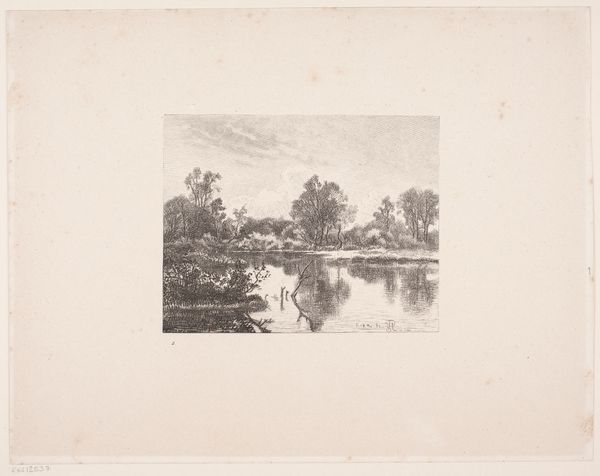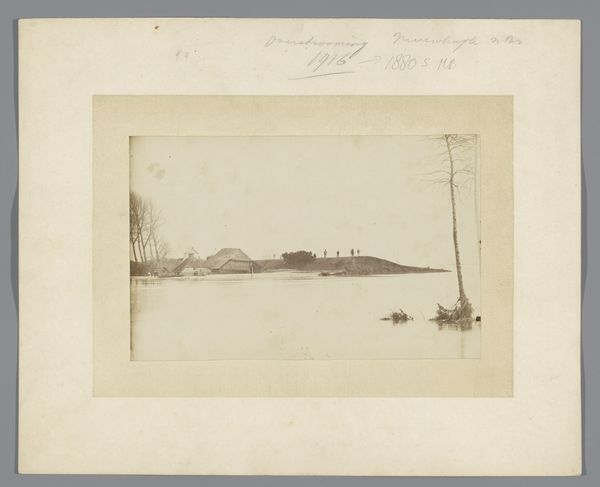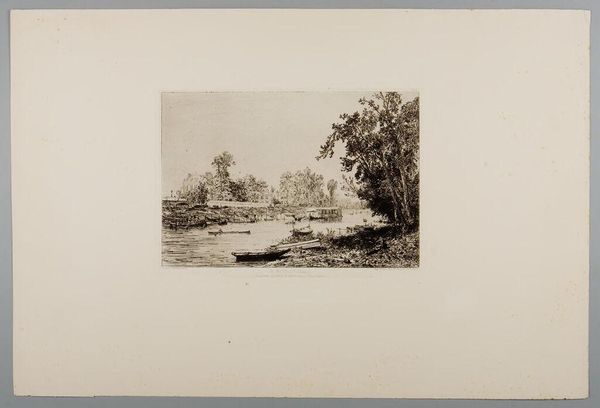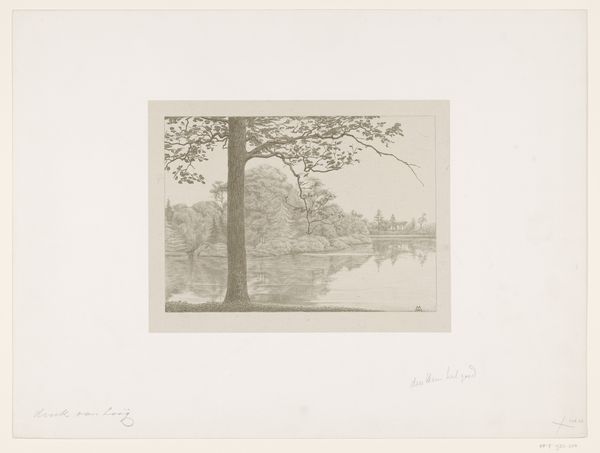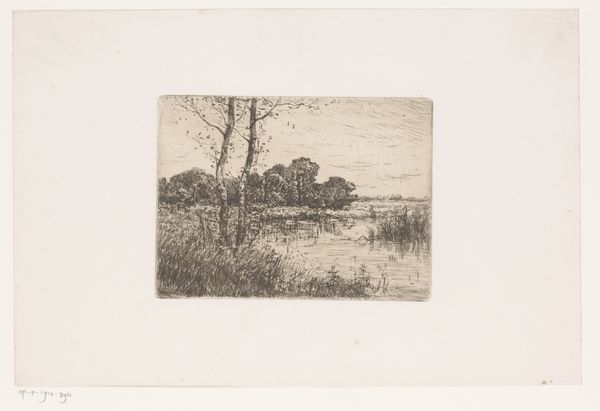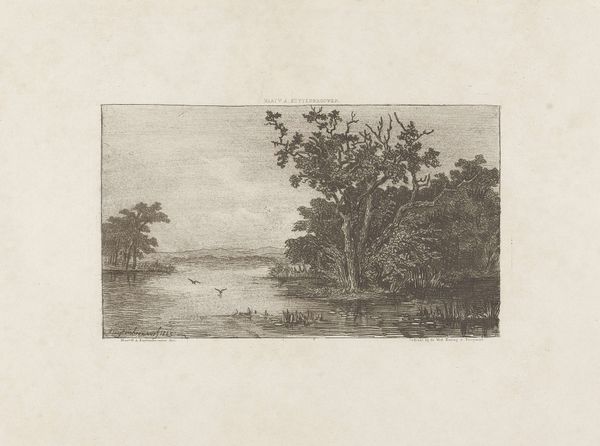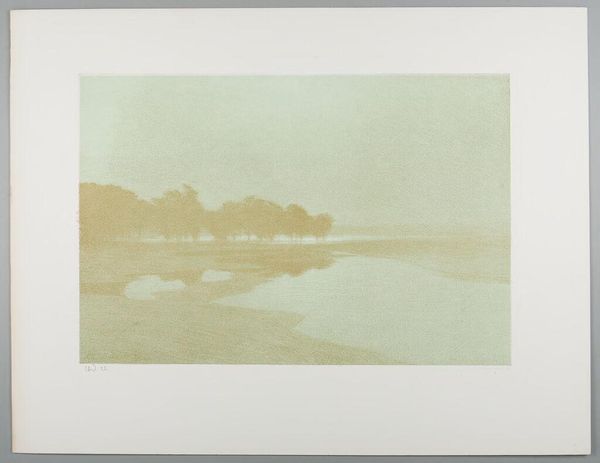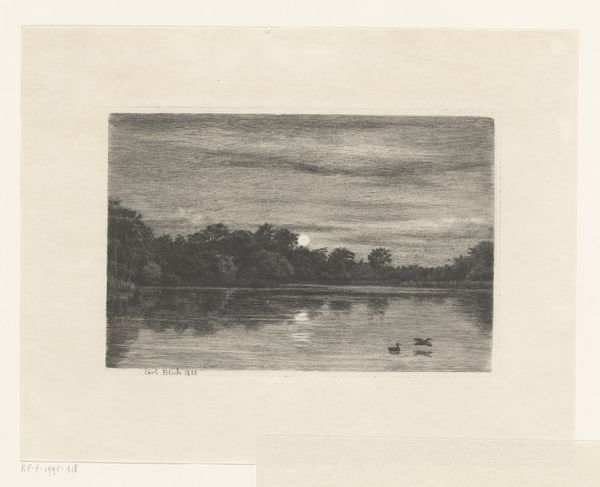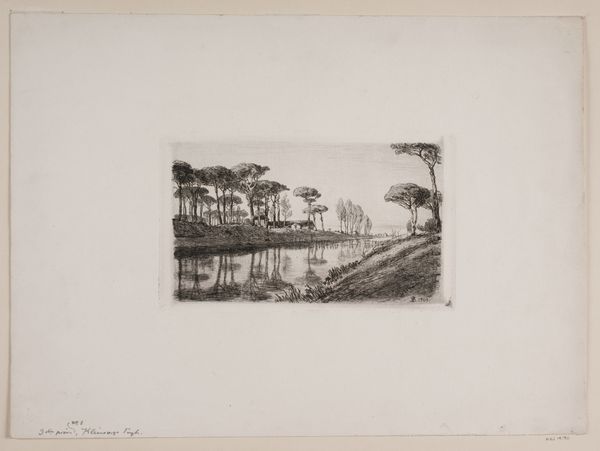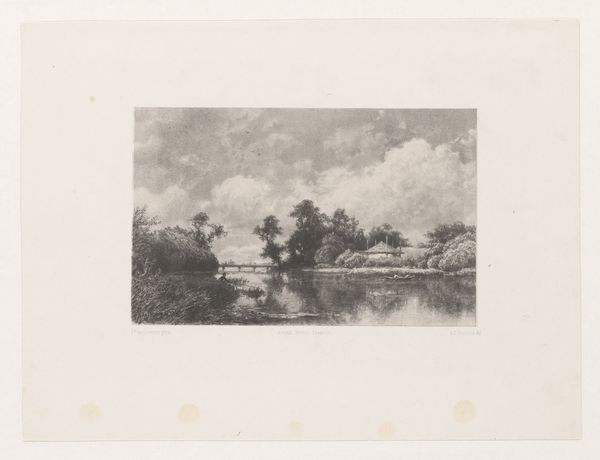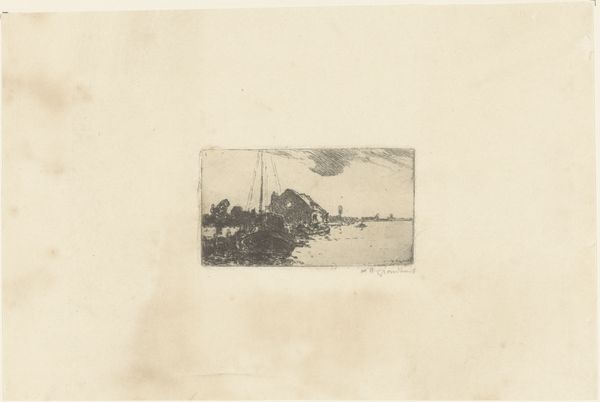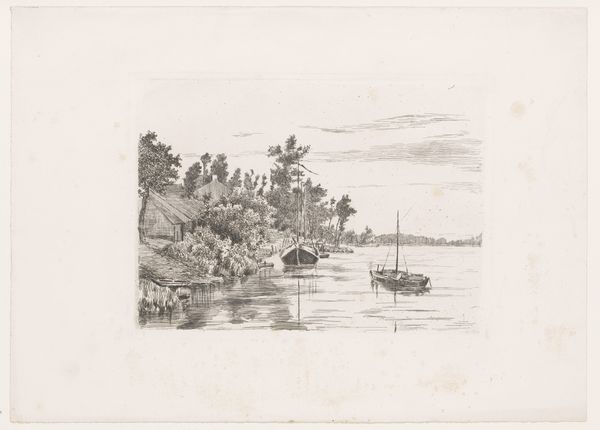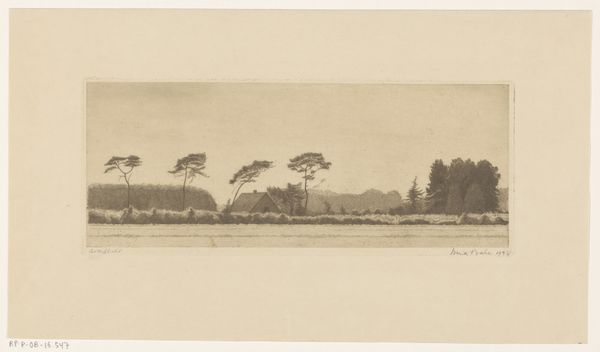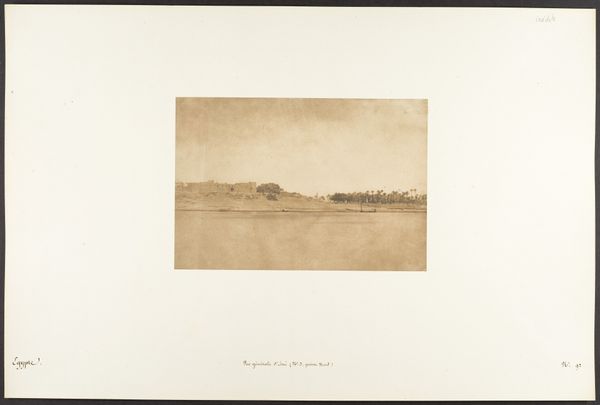
Magazijn van Mr. H. Benjamins 99 van Hemert nabij post Mindrineti 1905
print, cyanotype, photography
landscape
cyanotype
photography
orientalism
realism
Dimensions: height 114 mm, width 165 mm
Copyright: Rijks Museum: Open Domain
Curator: This striking cyanotype, titled "Magazijn van Mr. H. Benjamins 99 van Hemert nabij post Mindrineti," was created around 1905 by Jacob Evert Wesenhagen. It's a photograph, but the cyanotype process gives it this beautiful, almost ethereal blue hue. Editor: My first impression is a sense of quiet isolation. The limited tonal range contributes to a monochromatic and almost dreamlike rendering. It certainly evokes a feeling of stillness. Curator: Exactly. The process itself is quite interesting. Wesenhagen would have coated paper with iron salts, exposed it to sunlight with a negative, and then washed it in water to develop the image. It's a relatively simple process but capable of producing surprisingly detailed results. The very materiality of this image is part of its impact. Editor: I find myself drawn to what isn't explicitly shown. The title hints at trade, Mr. Benjamins' warehouse... This location in Suriname served not only as a point of exchange, but the photograph must have served a purpose as a demonstration of labor and resource extraction at this colonial outpost. The way the buildings sit along the waterway implies access and power structures in a landscape of resource exploitation. Curator: That's a great point. Considering its context within early 20th-century colonial expansion and trade, this seemingly tranquil scene might represent the machinery of a system. Think about how that access to resources impacts labor on the ground; or the indigenous communities. It becomes a potent visual document. Editor: Indeed. Wesenhagen, likely unintentionally, gives us this document for analysis. These structures represent so much more than storage; the river functions not just as a natural element, but as a conduit for commerce, linking this isolated outpost to global economies and colonial ambitions. What was taken, who benefited? These photographs speak volumes. Curator: Absolutely. Reflecting on this piece, it's incredible how this relatively simple cyanotype brings into focus such complex social and economic relationships bound up with a place like this outpost. The photographic process combined with colonial themes really gives you much to consider. Editor: For me, seeing it through a contemporary lens highlights the power dynamics inherent in landscapes seemingly untouched by conflict, and encourages a dialogue about the often obscured histories embedded in colonial structures.
Comments
No comments
Be the first to comment and join the conversation on the ultimate creative platform.
